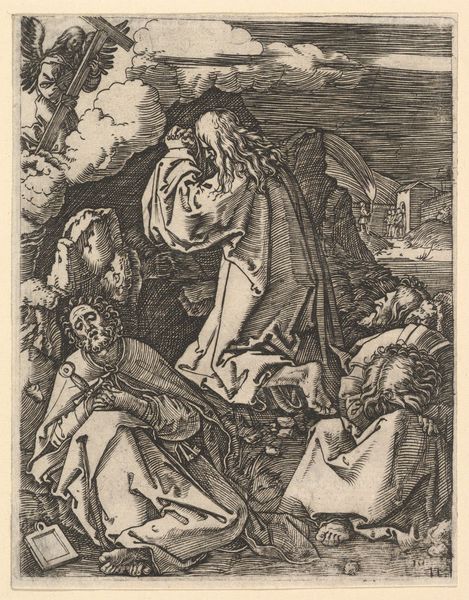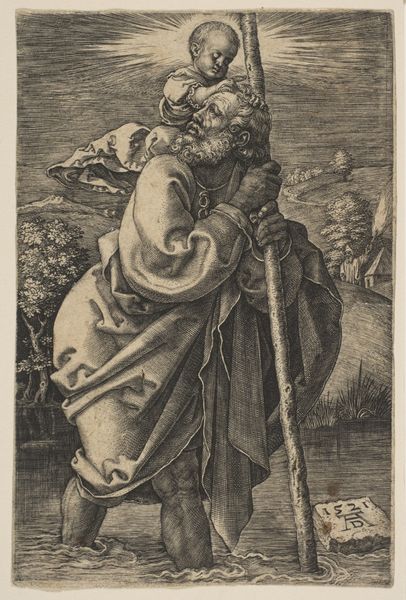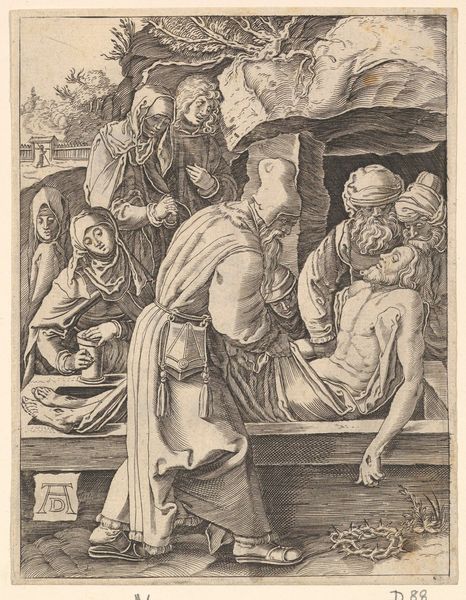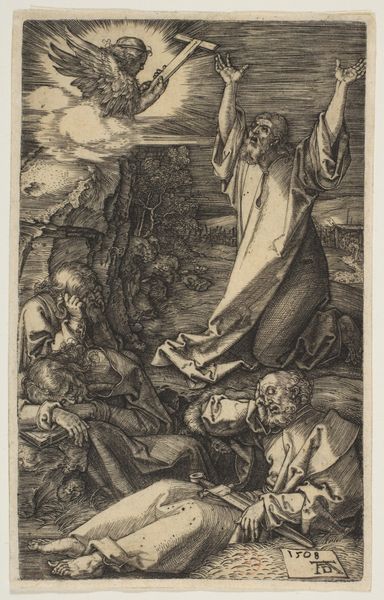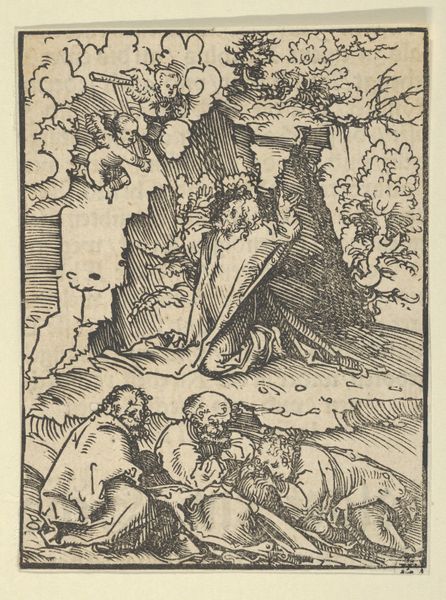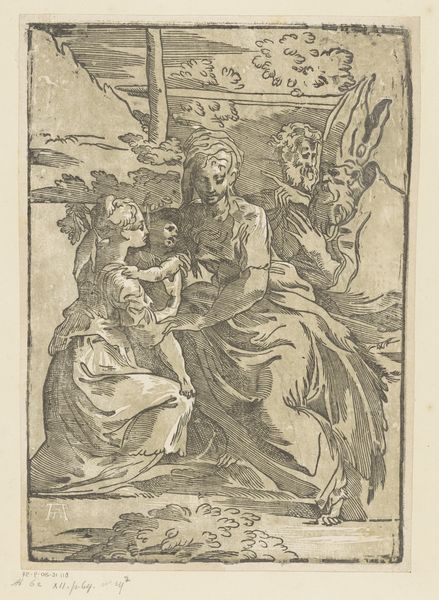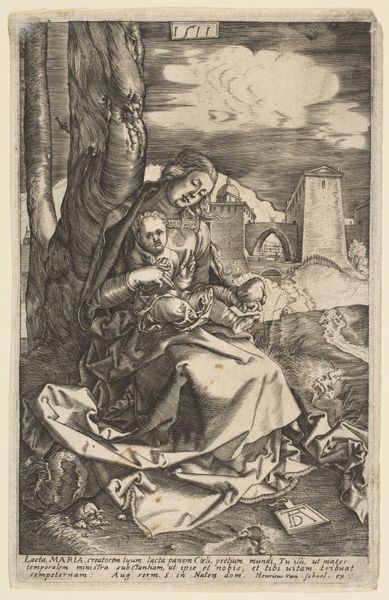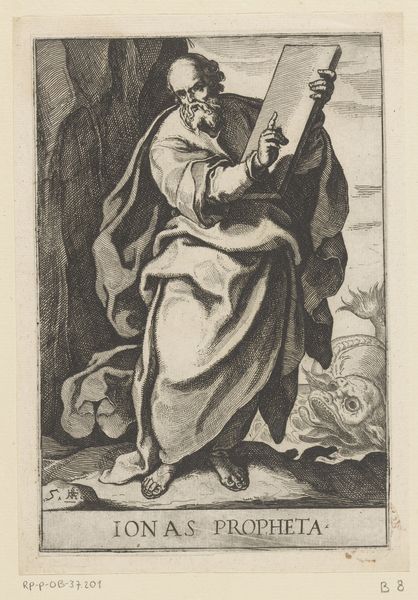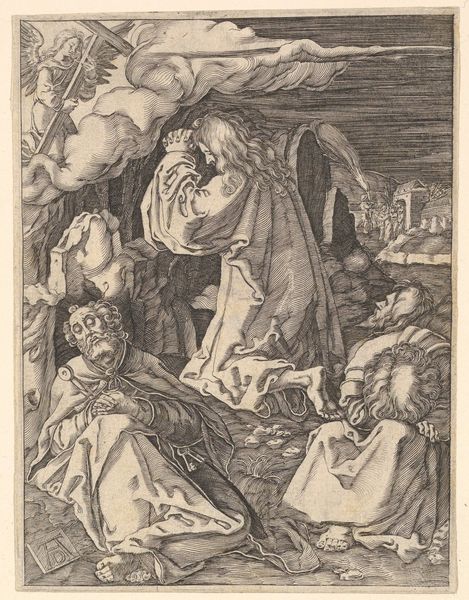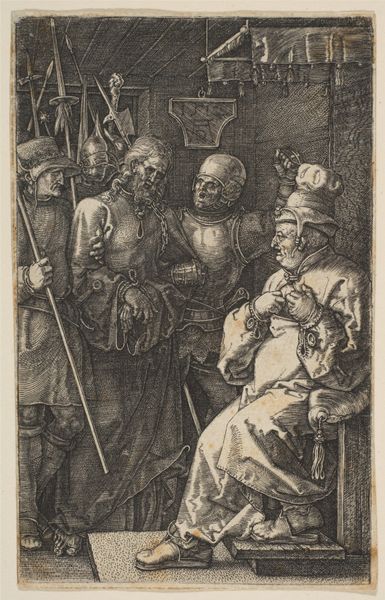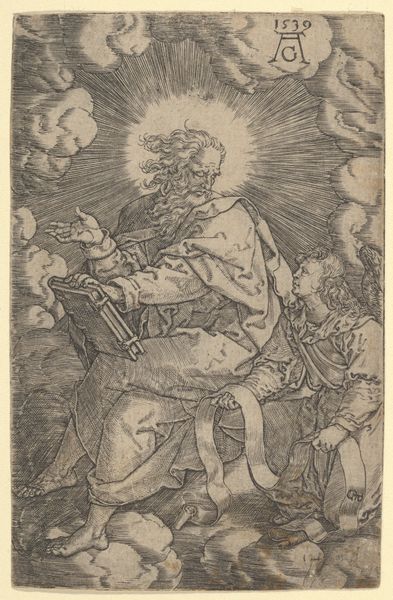
drawing, print, woodcut, engraving
#
drawing
# print
#
landscape
#
figuration
#
woodcut
#
history-painting
#
northern-renaissance
#
engraving
#
christ
Dimensions: Sheet: 4 11/16 × 2 15/16 in. (11.9 × 7.5 cm)
Copyright: Public Domain
Curator: Albrecht Dürer's "Saint Christopher Facing Right," created in 1521, is a masterful woodcut, now residing at the Metropolitan Museum. Editor: The intricate detail is striking. Despite the small scale, it has such weightiness. Christopher’s gaze conveys a determined strength. Curator: Absolutely. Dürer created this during a pivotal period, not just in his career, but also the Reformation's reshaping of artistic patronage. Religious imagery, and its accessibility, was a key issue at that time. Prints such as this circulated widely, effectively democratizing art. Editor: Indeed, this accessibility enhances its iconographic power. Note how the Christ child sits securely on Christopher’s shoulder, radiating light – literally illuminating Christopher’s face and the water’s surface. Curator: The artist strategically utilizes familiar religious symbolism, such as the staff – itself suggestive of both earthly support and spiritual guidance. Simultaneously, the figure becomes almost mundane. There’s a definite connection between the composition and the socio-political drive for religion to be more human-centered, less removed from the everyday life. Editor: The presence of the lantern-bearing hermit underscores that duality. It functions as a visual marker, showing Saint Christopher's journey is one of illumination and service, not just a physical act. The hermit almost foreshadows the true light Saint Christopher is carrying, doesn't he? Curator: He’s the precursor. This woodcut allows people from a variety of social stratifications to connect personally with this figure. Christopher transitions from the pagan giant, simply helping people across the river, to recognizing, embracing, and aiding Christ himself. Editor: So, we observe Dürer reflecting the changes of his time not just thematically but technically. This is quite advanced, both the composition and execution, even considered next to similar works created then. Curator: Yes, and its enduring appeal lies in how successfully it negotiated that space, appealing to a wide audience through both traditional iconography and new representational techniques. Editor: For me, it’s how the symbol and story resonate even now – that even the most difficult burdens, when shouldered with devotion, can lead to enlightenment.
Comments
No comments
Be the first to comment and join the conversation on the ultimate creative platform.

